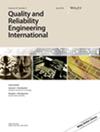监测多元时间序列中的协方差:比较机器学习和统计方法
IF 2.8
3区 工程技术
Q3 ENGINEERING, INDUSTRIAL
引用次数: 0
摘要
在高频率监测多个变量的复杂系统中,变量不仅存在时间上的自相关性,还可能存在非线性关系,或随着输入或操作的变化而表现出非静止性。处理此类变量的一种方法是在监测前对它们进行去趋势处理,然后应用控制图,假定残差具有独立性和静止性。监控受控系统更具挑战性,因为控制策略旨在将变量维持在预先指定的均值水平,而为了补偿,变量之间的相关性可能会发生变化,因此监控协方差至关重要。本文比较了矢量自回归模型(VAR)、多元随机森林(MRF)和神经网络(NN)在使用多元指数加权移动平均(MEWMA)控制图监测残差协方差之前对多元时间序列进行去趋势的方法。当数据结构未知或可能发生变化时,机器学习模型具有优势。我们利用非线性、非平稳和自相关数据设计了一项新颖的模拟研究,以比较不同的去趋势模型和随后的协方差监测。机器学习模型在处理非线性和强自相关数据时性能优越,在处理线性数据时性能相似。以反渗透过程的数据为例进行说明。本文章由计算机程序翻译,如有差异,请以英文原文为准。
Monitoring covariance in multivariate time series: Comparing machine learning and statistical approaches
In complex systems with multiple variables monitored at high‐frequency, variables are not only temporally autocorrelated, but they may also be nonlinearly related or exhibit nonstationarity as the inputs or operation changes. One approach to handling such variables is to detrend them prior to monitoring and then apply control charts that assume independence and stationarity to the residuals. Monitoring controlled systems is even more challenging because the control strategy seeks to maintain variables at prespecified mean levels, and to compensate, correlations among variables may change, making monitoring the covariance essential. In this paper, a vector autoregressive model (VAR) is compared with a multivariate random forest (MRF) and a neural network (NN) for detrending multivariate time series prior to monitoring the covariance of the residuals using a multivariate exponentially weighted moving average (MEWMA) control chart. Machine learning models have an advantage when the data's structure is unknown or may change. We design a novel simulation study with nonlinear, nonstationary, and autocorrelated data to compare the different detrending models and subsequent covariance monitoring. The machine learning models have superior performance for nonlinear and strongly autocorrelated data and similar performance for linear data. An illustration with data from a reverse osmosis process is given.
求助全文
通过发布文献求助,成功后即可免费获取论文全文。
去求助
来源期刊
CiteScore
4.90
自引率
21.70%
发文量
181
审稿时长
6 months
期刊介绍:
Quality and Reliability Engineering International is a journal devoted to practical engineering aspects of quality and reliability. A refereed technical journal published eight times per year, it covers the development and practical application of existing theoretical methods, research and industrial practices. Articles in the journal will be concerned with case studies, tutorial-type reviews and also with applications of new or well-known theory to the solution of actual quality and reliability problems in engineering.
Papers describing the use of mathematical and statistical tools to solve real life industrial problems are encouraged, provided that the emphasis is placed on practical applications and demonstrated case studies.
The scope of the journal is intended to include components, physics of failure, equipment and systems from the fields of electronic, electrical, mechanical and systems engineering. The areas of communications, aerospace, automotive, railways, shipboard equipment, control engineering and consumer products are all covered by the journal.
Quality and reliability of hardware as well as software are covered. Papers on software engineering and its impact on product quality and reliability are encouraged. The journal will also cover the management of quality and reliability in the engineering industry.
Special issues on a variety of key topics are published every year and contribute to the enhancement of Quality and Reliability Engineering International as a major reference in its field.

 求助内容:
求助内容: 应助结果提醒方式:
应助结果提醒方式:


